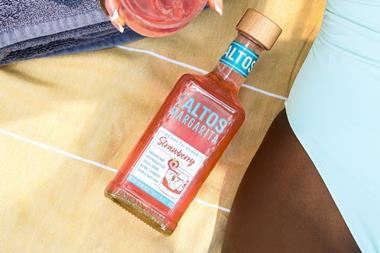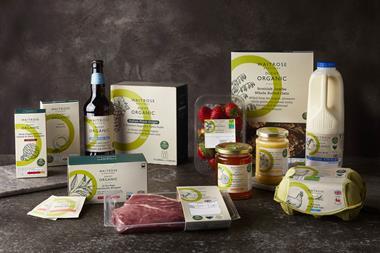Supermarket prices remain on a downward trajectory as the annual round of festive booze promotions kicks in.
Average prices across the multiples were down 1.2% in November on the previous month, according to the latest The Grocer Price Index, collated by BrandView.co.uk.
The key driving force behind the drop was a 6.8% month-on-month reduction in alcohol prices, as retailers offered cut-price deals to encourage customers to stock up on booze ahead of the Christmas season. Even with promotions stripped out, alcohol prices fell by an average of 2.6%.
Asda offered the most generous alcohol price cuts, slashing them by 8.6%. However, it wasn’t responsible for the biggest overall reductions in average price. That title went to Sainsbury’s, which slashed prices by 2.7% over the month, having hiked them by 4.5% in October. It made reductions in all but three of the 15 categories tracked by the GPI. That said, on a year-on-year basis, Sainsbury’s price inflation of 2.4% is still higher than the average inflation figure across the supermarkets, of 1.3%.
Peanuts made plenty of headlines in 2011 following problems with the US crop, but this year prices have been on a decidedly downward trend as the market returns to more normal conditions. At £1,014/tonne, peanuts in the EU are now 33% cheaper than last year, having fallen by a further 7.5% in the past month.
Prices are also down for hazelnuts, which have fallen by 31.7% year-on-year, as production in turkey - the world’s largest producer - returns to normal after a challenging 2011.
Cashews also remain cheaper than they were last year, although increased seasonal demand has pushed up prices by 4.3%, to £4,794/tonne over the past month.
Where ingredients have become more expensive over the past year, increases have been relatively modest. At £5,269/tonne, black pepper prices in the EU are up 8% year-on-year, while honey prices in Spain are up 1.1%.
That average is being dragged down by Morrisons, which has been cutting prices in recent months in an effort to boost flagging sales. Its prices are 3.1% lower than they were a year ago, driven down by a massive 19.3% slump in baby product prices, as well as price cuts across deli, fruit & vegetables and alcohol.
Waitrose is the only other supermarket to have reduced its prices year-on-year. The upmarket retailer cut prices by 0.8% month-on-month in November, which helped push it into deflationary territory on an annual basis. Its prices are 0.2% lower than they were a year ago.
Tesco’s annual inflation was the highest of the big five supermarkets, at 2.9%. It was also the only supermarket to increase its prices month-on-month, albeit by just 0.1%. Asda’s annual inflation was closest to the overall average, at 1.9%.
The strongest upward pressure on prices is coming from the sharp increase in wheat prices this year. It is therefore no surprise that bakery is the category experiencing the highest annual price inflation across the supermarkets. Average prices are 9.7% higher than they were a year ago, after an average month-on-month increase of 1.7% in November.
The true extent of the impact of the wheat cost hike and increases in other grain costs is only likely to become apparent in the new year.
For the time being, retailers are keeping prices in check as they battle to keep market share during the busy Christmas trading period.



















No comments yet